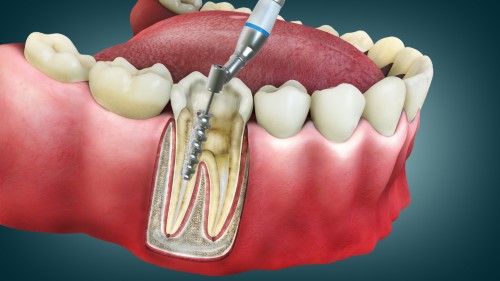Root Canals

Our Process
Initial Examination and Diagnosis
The dentist begins with a thorough examination of the affected tooth, which may include X-rays, to diagnose the extent of the infection or damage inside the tooth.
Anesthesia and Tooth Isolation
Local anesthesia is administered to numb the tooth and surrounding area, ensuring a pain-free procedure.
The tooth is isolated with a rubber dam to keep it dry and free from saliva during the procedure.
Accessing the Pulp Chamber
The dentist drills an opening in the crown of the tooth to access the pulp chamber and root canals.
Cleaning the Root Canals
Special instruments are used to clean out the infected or damaged pulp from the canals. The dentist also shapes the canals to prepare them for the filling material.
The canals are disinfected to eliminate any remaining bacteria.
Filling the Root Canals
The cleaned and shaped canals are filled with a biocompatible material, usually gutta-percha, and sealed with an adhesive cement to prevent future infection.
Restoring the Tooth
A temporary filling material is placed on the access opening to protect the tooth between appointments. In some cases, a permanent filling or crown may be placed in the same visit.
Post-Procedure Care
The dentist provides instructions on how to care for the treated tooth and manage any post-procedure discomfort. This may include pain management and oral hygiene practices.
Follow-Up
If a temporary filling was used, a follow-up visit is needed for the placement of a permanent filling or crown to fully restore the tooth.
